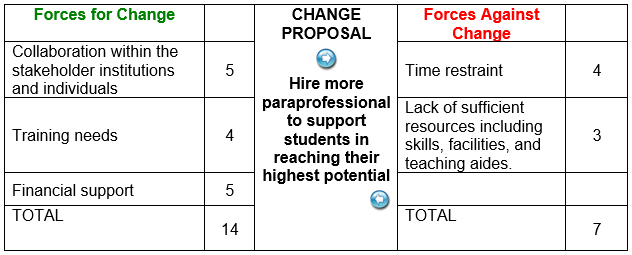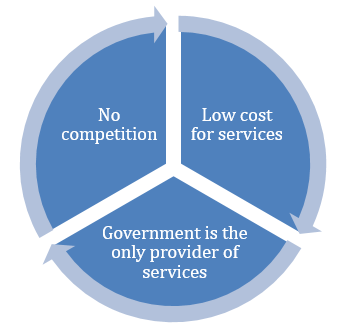Organizations that operate globally and are concerned with health care matters want to improve the current state of access and quality of services. However, different countries develop unique models of healthcare delivery that prioritize a particular performance indicator. This paper aims to summarize the missions and major initiatives of United Nations (UN), World Bank, and International Monetary Fund (IMF) as well as examine the major healthcare models and key performance indicators.
United Nations Foundation
UN is among the most significant healthcare establishments that are concerned with issues affecting individuals across the world. The mission of this organization is in ensuring the protection of global health and universal health coverage (“Global health,” n.d.). According to the UN, this can be achieved through sustainable development because the approach enables adequate fulfillment of goals. One of the initiatives that the UN supports is control of pandemics that can affect individuals globally.
Others include protection from super drugs, achieving equality in the provision of health care services, and cooperation with others (“Global health,” n.d.). UN facilitates its mission by providing vaccines to the regions that are at high risk of developing diseases and to people who cannot afford these drugs due to socioeconomic reasons. Additionally, the UN serves as an advocate for family planning and other projects that are related to global health as part of its operations.
The UN’s practices comply with the WHO Constitution because the two work together on some projects. Additionally, the UN is concerned with other aspects of a person’s life, which reflects the coherency of their work in regards to both physical and mental health, which is one of WHO’s principles (World Health Organization, n.d.). In addition, the UN’s work for controlling epidemics is compliant with the concept of unequal development that threatens all populations. Therefore, it can be concluded that the UN focuses on helping individuals worldwide to obtain necessary health care resources.
The World Bank
The operations of the World Bank are not solely focused on global health because this organization aims to combat poverty and promote prosperity. Similarly to the UN, this establishment emphasizes the importance of sustainable practices (“Health,” n.d.). In regards to health issues, the World Bank’s initiatives include the provision of support to states that aim to incorporate universal health coverage to their citizens, which should be accessible to all individuals globally by 2030 (“Health,” n.d.).
Thus, this organization provides support in the form of research and financial investments. This is compliant with the WHO Constitution principle of governmental responsibility “for the health of their peoples which can be fulfilled only by the provision of adequate health and social measures” (World Health Organization, n.d., p. 1). Additionally, the World Bank helps bridge the gap between well-develop nations and developing countries, which corresponds to the WHO argument of a global health threat. Therefore, it can be argued that the World Bank targets the governments and their responsibilities in regards to health promotion and provision of health services.
International Monetary Fund
IMF is an organization that is concerned with the economic functioning of the countries. Nevertheless, IMF cites the importance of health oriented projects to make certain that individuals have access to health care resources, which can be facilitated through economic development (“How the IMF promotes global economic stability,” 2018). This is facilitated by the implementation of new policies in countries and assistance, which is the primary objective of the IMF’s initiatives.
Lagarde (2017) states that most programs target education and health care system improvement in countries low economic status. Through the investments that IMF makes governments are able to improve access to care. IMF cooperates with other global initiatives, such as the World Bank to achieve its goal. It can be argued that the efforts of the IMF comply with WHO Constitution standards because the emphasis of both is on ensuring equality of countries’ development.
Entrepreneurial Model
This approach can be characterized by the presence of private medical companies in the industry. According to Mühlbacher, Bethge, Reed, and Schulman (2015), in this model, the government of a country does not take part in the interactions between a patient and a health care provider. The author states that the strategy is applied in both developed and developing states. The issue, however, is that while the quality of services as an important performance indicator is excellent due to the rivalry, the costs may be high. Thus, patients that cannot afford to pay for services are left without care. The factors that can be applied to evaluate performance are costs and quality. Chart 1 contains a summary of this model’s key features.

Mandated Health Insurance
This approach implies that all citizens in a particular country have to obtain health insurance to be eligible for receiving care. This can be done either individually or through an employer, which guarantees to pay for insurance services (Friedson & Marie, 2017).
This approach is useful for disease treatment because it allows allocating resources for improving the quality of services and using innovative methods such as telehealth. An obvious issue in this model is affordability, which can be mitigated through programs that are functioning in the US – Medicaid, and Medicare. Performance indicators relevant to this approach are quality and cost. Chart 2 contains the key elements that characterize the mandate health insurance model.

National Health Service
This model implies governmental control over funding and operations of health care providers. According to Chung (2017), in this model, the government creates a centralized service that oversees health care matters. In terms of costs, this model is efficient because it allows providing services and funding them through taxes, which results in low prices for consumers. However, the quality of the services, as one of the key performance indicators, is impaired due to long waiting lists (Chung, 2017).
Additionally, innovation may be an issue because the market does not have rival establishments that work towards improving efficiency. The access to care in this model is universal, which is a significant performance measurement in this approach. Thus, Chart 1 displays the key components of this model.

Comparison
In regards to costs as one of the performance indicators for the three health care models mentioned above, each has significant differences. Due to the nature of each model, a patient can receive care services for free according to the national health service approach, pay for everything out of pocket as in the entrepreneurial model, or have to pay monthly for an insurance plan in the mandated health insurance. In terms of the chosen performance indicator, the national health system approach is the most effective.
Key Performance Indicators
Organizations have to benchmark their performance and evaluate it to ensure the improvement of their health care approaches. According to Human Resources and Service Administration (HRSA), the key performance indicators are applied by health care organizations to measure the efficiency of their work and are used to examine structure, processes, and management (“Performance measures,” 2016).
For instance, access to care, which involves some patients served, participants of a particular program, and the number of eligible individuals allow identifying whether the existing structure is capable of providing care to all patients. Additionally, Meltzer and Chung (2014) state that there are over 250 indicators that can be used to identify whether the existing practices contribute to the health outcomes of a patient. Those can be applied to determine whether the current approaches are effective in delivering positive health outcomes.
Conclusion
Overall, the three organizations examined in this paper – UN, World Bank, and IMF are global healthcare establishments. All of them align their mission with the WHO constitution because they aim to promote better access to care through their initiatives. The three models of care that are identified in this paper are – entrepreneurial, mandate health insurance, and national health service. Key performance indicators, such as quality, accessibility, costs, and others help determine the efficiency of processes, structure, and outcomes.
References
Chung, M. (2017). Health care reform: Learning from other major health care systems. Web.
Friedson, A., & Marier, A. (2017). Mandated health insurance and provider reimbursement via private insurance: Evidence from the Massachusetts health reform. Health Services Research and Managerial Epidemiology, 4, 1-6. Web.
Global health. (n.d.). Web.
Health. (n.d.). Web.
How the IMF promotes global economic stability. (2018). Web.
Lagarde, C. (2017). Protecting education and health spending in low-income countries. Web.
Meltzer, D. O. & Chung, J. W. (2014). The population value of quality indicator reporting: A framework for prioritizing health care performance measures. Health Affairs, 33(1), 132-139. Web.
Mühlbacher, A. C., Bethge, S., Reed, S. D., & Schulman, K. A. (2015). Patient preferences for features of health care delivery systems: A discrete choice experiment. Health Services Research, 51(2), 704-27. Web.
Performance measures. (2016). Web.
World Health Organization. (n.d.). Constitution of the World Health Organization. Web.